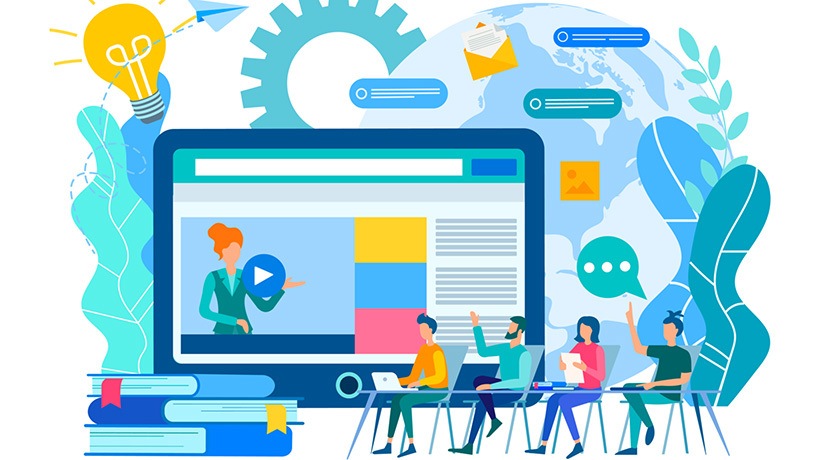ILT To eLearning: A Step-By-Step Process
The human touch of Instructor-Led Training, along with the support and guidance an instructor provides to a learner, is something that cannot be replicated by digital learning courses. Having said that, ILT has certain disadvantages, such as its limited reach and the costs involved to name a few, which make it unsuitable for modern L&D. However, this does not mean that your old ILT programs should go to waste. You can always convert your old ILT programs to digital learning courses, which will pack the same punch as traditional classroom training of the old times while being suitable for modern learners. In this article, let us discuss how to convert your organization’s old ILT to digital learning.
How To Approach ILT To Digital Learning Conversion
ILT and digital learning are two very different things, which is why it takes careful planning and an established approach to go about such a conversion. Let us discuss an approach that will streamline the process.
1. Analyze Your Audience
Just like you would do before designing any sort of training, analyze your audience before the conversion. How is your present audience different from an ILT audience? How do they learn best? What learning strategies would be suitable for them? Also, determine how much your audience knows about the topic you’ve selected to convert (assessing previous knowledge).
2. Analyze The Learning Environment
Secondly, analyze where learning is taking place. If learning takes place in the office itself, the digital learning courses will be different and longer in duration. And if it takes place on mobile devices during commutes, breaks or at home, it is better to use microlearning units. This is also the time to determine what digital formats you will be using in your courses, such as videos, games, simulations, infographics, interactivities and/or VR/AR (Virtual Reality/Augmented Reality).
3. Tweak Learning Objectives According To Digital Learning
Learning objectives that are written for ILT and those written for digital learning are slightly different. While not much change is required, remember to align the learning objective to the assessment at the end, and to make sure that the learning objective is performance-based. Learning objectives are important because they help you determine and define the content, the instructional strategy as well as the cost of conversion.
4. Analyze And Recreate The Content
First off, you need to analyze the content in the ILT program to understand the topic in detail. Salvage what you can from the ILT content to be used in your digital learning course. Identify and fill any gaps in the ILT content when re-purposing it for digital learning. When you’ve created the whole content to be used in the course, you can move on to deciding the Instructional Design strategy.
5. Decide On The Instructional Design Strategy
The Instructional Design strategy is a very important part of the conversion process. Decide on a strategy that aligns with your learning objective and that allows you to incorporate proper, high-end visuals and helps you design your digital learning course for the modern learner. It allows you to balance OST (on-screen text) with audio as well as incorporate all the latest digital formats used in digital learning. Microlearning is a popular Instructional Design strategy these days as it fulfills all the above criteria.
6. Design Assessments Creatively
Assessments are a very important part of a digital learning course and an element that makes digital learning different from ILT. Place assessments such as knowledge checks within and in-between courses and/or modules. Also, place formative assessments like quizzes and tests at the end of the modules and/or the courses to measure that the learning objective has been fulfilled. Finally, place summative assessments at the end of the whole topic (a topic consists of several courses). Remember to keep feedback immediate in all types of assessments.
Use the above-mentioned tips to go about converting ILT to digital learning. Read a few case studies of well-known organizations about how they converted their ILT programs to digital learning. This will help you with an effective conversion. Save time and boost employee knowledge and productivity through the conversion process.


